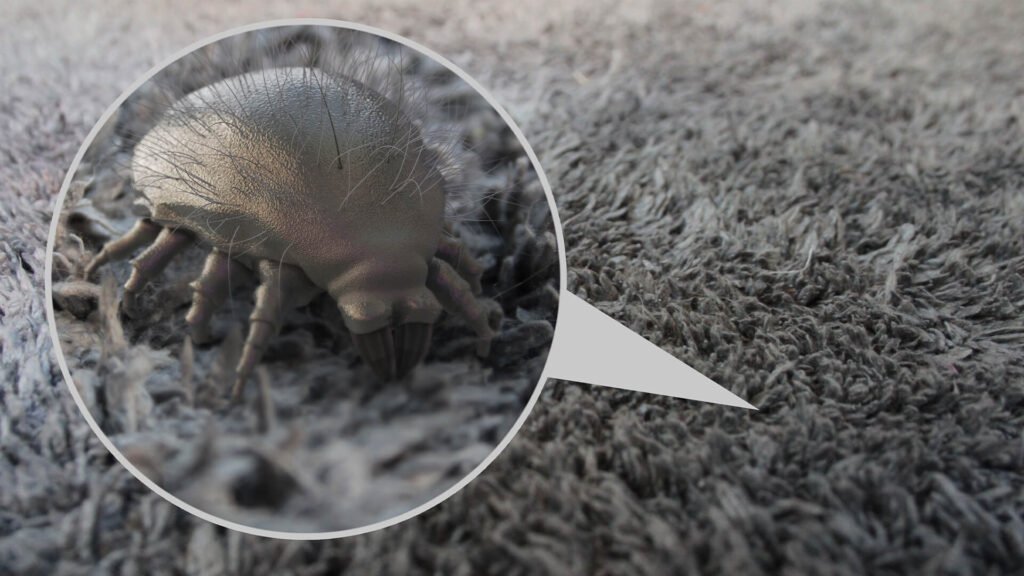Carpets may trap pollutants and allergens like dust mites, pet dander, cockroach allergens, particle pollution, lead, mold spores, pesticides, dirt and dust. Toxic gases in the air can stick to small particles that settle into carpets.1 These pollutants may become airborne during renovations, vacuuming or even walking on the carpet. In the home, children are more likely to be exposed to pollution in carpets. They spend time playing on the floor and place their hands in their mouths. If a large area is covered in carpet, it may be very difficult to remove indoor air pollutants and allergens.2
Chemicals used in some new carpets, carpet pads and the adhesives used to install them can harm your health. Some of these products are made with volatile organic compounds (VOCs), which emit odors and chemicals.
How can you protect your health?
Instead of carpets, chose hard-surfaced flooring and rugs that can be removed and cleaned outside. If this is not possible, vacuum frequently with a High Efficiency Particulate Air (HEPA) filter.2However, vacuuming may disturb settled particles, causing more pollution to become airborne. Deep clean carpets annually using dry steam cleaning. Make sure carpets are properly dried to reduce the potential for mildew.
Kitchens, bathrooms and entryways should always be carpet free because they are frequently damp, providing a good environment for mold. Use durable mats outside entryways to limit dirt entering the home and provide space for people to put their shoes near the door.
Choose building products that releases fewer VOC. Request that the carpet is unrolled and aired out in a well-ventilated area (a clean, dry warehouse, for example) for 72 hours before installation. If possible, have carpet installed while the space is unoccupied. Request the use of glues or adhesives that are non-toxic and low VOC. Then allow 72 hours of ventilation before inhabiting the space. Make sure the carpet can be removed later without use of toxic chemicals.
What Are Dust Mites?
Dust mites are very small, insect-like pests that feed on dead human skin cells and thrive in warm, humid settings. Dust mites are too small for us to see. They are not parasites that bite, sting or burrow into our bodies. Instead, people who are allergic to dust or dust mites are reacting to inhaling proteins in dust that comes from dust mite feces, urine or decaying bodies. Any swelling (also called inflammation) of the nasal passages caused by dust mites is considered a dust allergy.
Dust mites can live in the bedding, mattresses, upholstered furniture, carpets or curtains in your home. Dust mites are nearly everywhere; roughly four out of five homes in the United States have dust mite allergens in at least one bed.
Protect your family while adding value to your Asset. We help you change the dirty and unhealthy carpet for a better option.
Take advantage of our discount 20% OFF on all collections only for the month of February. Limited stock available.
References
- U.S. Environmental Protection Agency (EPA). Indoor Air Quality Tools for Schools: http://www.epa.gov/iaq/schooldesign/controlling.html#Carpet Controlling Pollutants and Sources. Accessed August 26, 2015.
- Institute of Medicine, Division of Health Promotion, Indoor Air and Disease Prevention. Clearing the Air: Asthma and Indoor Air Exposures. National Academies Press. Washington, DC. 2000; Kanchongkittiphon W, et al. http://ehp.niehs.nih.gov/1307922/ Indoor Environmental Exposures of Asthma: An Update to the 2000 Review by the Institute of Medicine. Environmental Health Perspectives. 2015; 123: 6-20.
- California Air Resources Board (CARB). Report to the California Legislature: Indoor Air Pollution in California. Sacramento, CA: California Environmental Protection Agency. 2005.
- EPA. http://www.epa.gov/iaq/voc2.html An Introduction to Indoor Air Quality: Volatile Organic Compounds. Accessed August 26, 2015.



